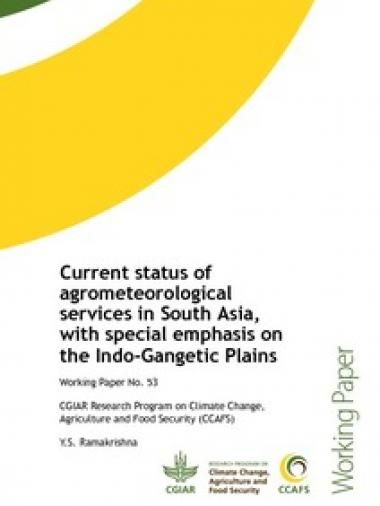Current status of agrometeorological services in South Asia, with special emphasis on the Indo-Gangetic Plains

The climate of South Asia defies easy generalization, comprising a wide range of conditions across a large geographical scale and varied topography. India, for instance, hosts 6 major climatic sub-types, ranging from desert in the west, to alpine tundra and glaciers in the north, to humid tropical regions supporting rain forests in the southwest, and the island territories. Meanwhile, the climate of Bhutan varies with altitude, manifesting subtropical conditions in the south and a polar-type climate, with year-round snow, in the north.
Against this varied environment, South Asia is one of the poorest regions of the world. In 2005, more than 40 percent of the region’s population lived on less than 1 dollar a day, as compared to 50 percent in sub-Saharan Africa (World Bank 2010). More than 75 percent of South Asia’s poor live in rural areas and most rely on agriculture for survival. In addition, South Asia has one of the highest child-malnutrition rates in the world. In India and Bangladesh, the percentage of children who do not receive adequate food is 40 percent (Global Health Initiative 2010).
Citation
Ramakrishna YS. 2013. Current status of agrometeorological services in South Asia, with special emphasis on the Indo-Gangetic Plains. CCAFS Working Paper No. 53. Copenhagen, Denmark: CGIAR Research Program on Climate Change, Agriculture and Food Security (CCAFS).